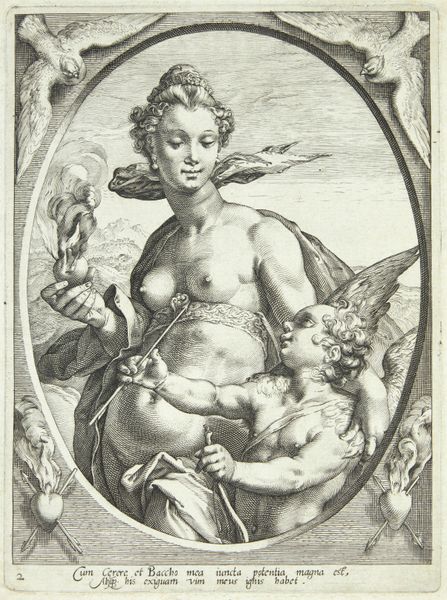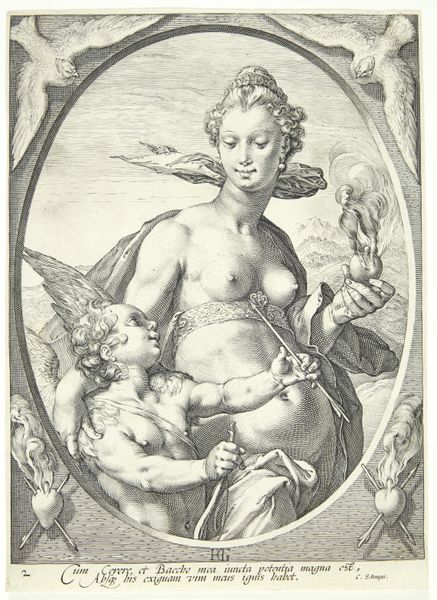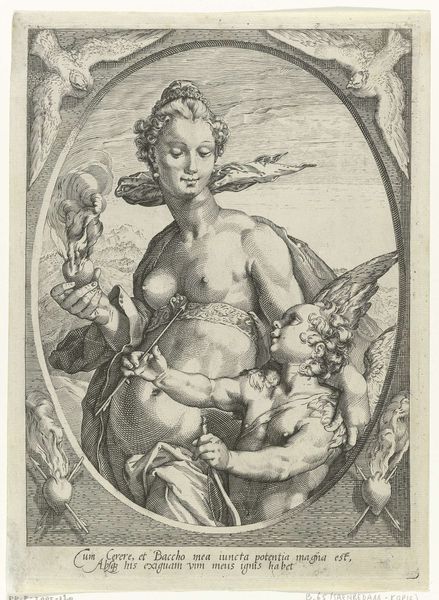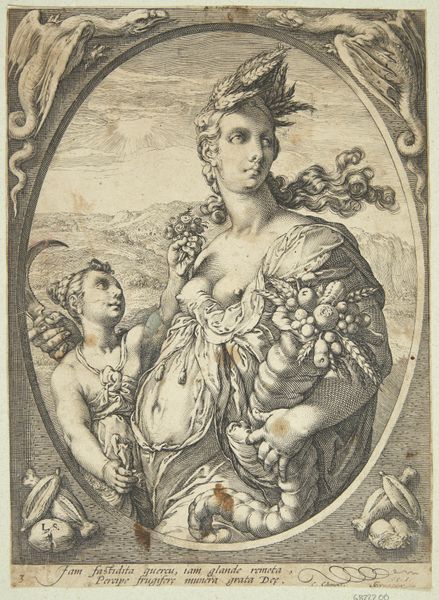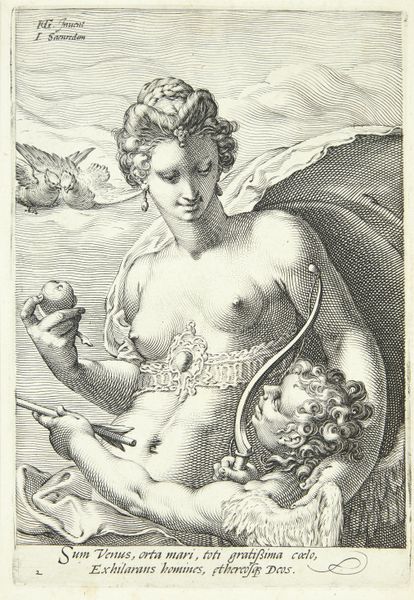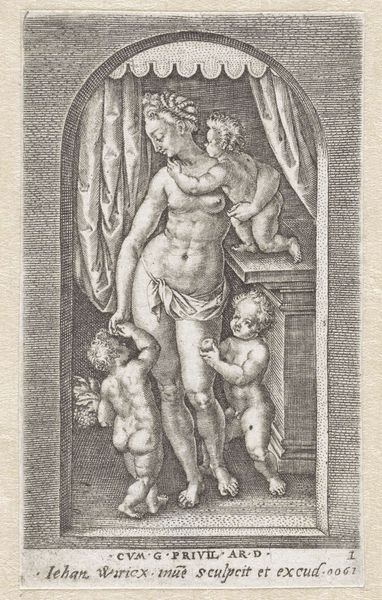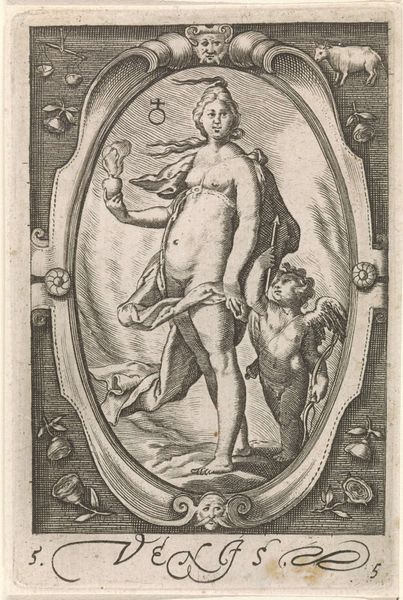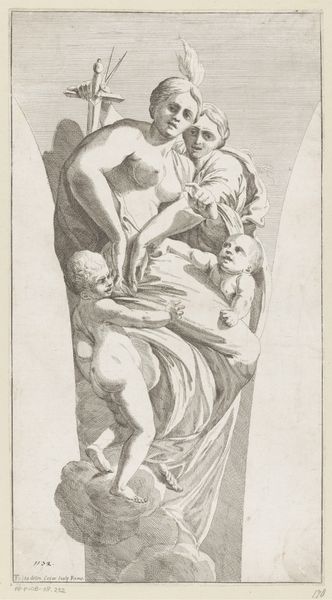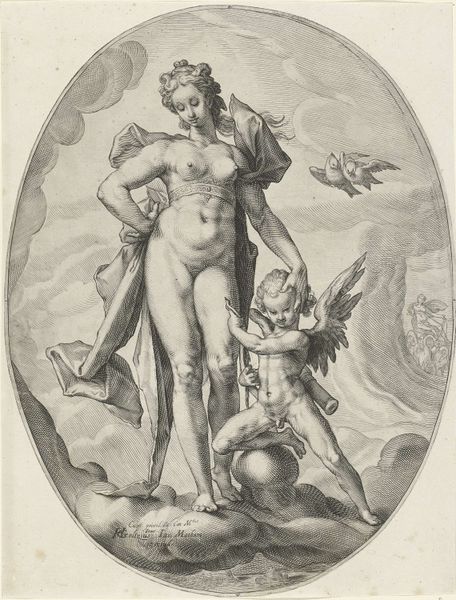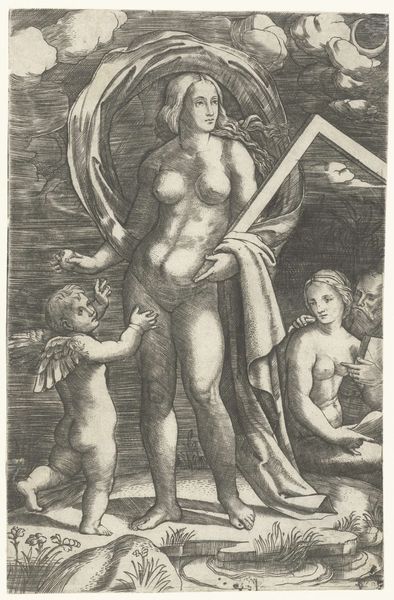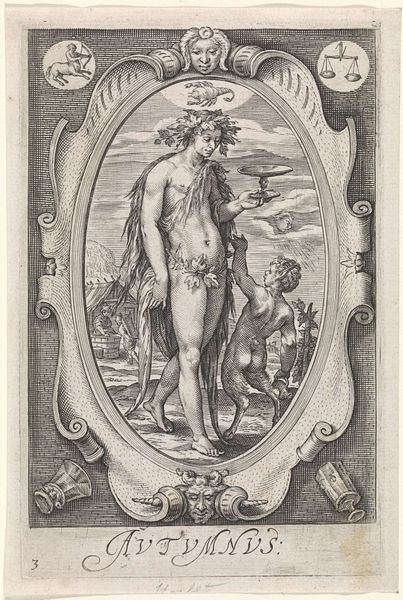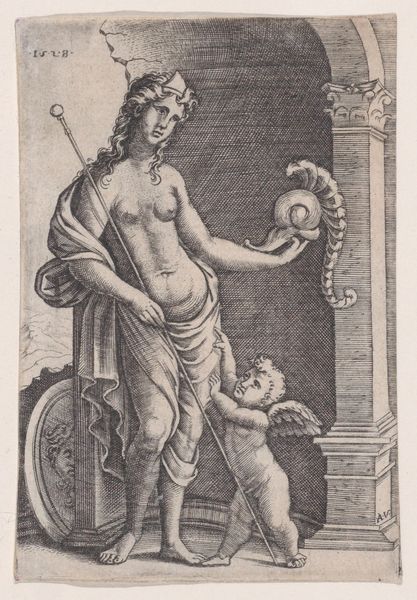
print, engraving
#
portrait
#
allegory
# print
#
mannerism
#
nude
#
engraving
Dimensions: 238 mm (height) x 180 mm (width) (bladmaal)
Curator: This is Hendrick Goltzius's "Venus," an engraving dating back to 1595, now residing at the SMK, Statens Museum for Kunst. Editor: My immediate reaction? There's a delicacy to the line work, a real contrast to the voluptuous figures portrayed. You sense the skill involved, the hand of the artisan making a luxury product to disseminate particular ideas. Curator: Absolutely. Goltzius was a master engraver, and this piece exemplifies the Mannerist style—exaggerated forms, elegant compositions, and allegorical subject matter designed for an elite audience that would grasp the symbolism. Note how the print circulated ideas on beauty, love, and the feminine ideal, shaping cultural values. Editor: I’m struck by Venus’s accessories: the burning torch she’s holding, the ornate band around her body. Are they part of her essential nature, or simply decorative items amplifying her commercial desirability? What’s the role of materials here – the ink, the paper, the copper plate in shaping this idea? Curator: Both, really. Venus's iconography—the torch, often accompanied by Cupid—signifies desire and passion. These were potent symbols employed by artists but equally meaningful were their social underpinnings – power, prestige, beauty – and these artworks played a significant role in shaping and promoting societal structures. Editor: It is interesting, that Cupid's arrow seems like it might pierce her if she isn't careful. Are the socio-political implications perhaps not always so well thought out? Also, look closely; see how the ink sits on the page. Every line made, every shade added or omitted served a communicative purpose. The quality of the materials mattered, indicating the engraver's skill and the commissioner's wealth. It’s not just aesthetic value; it’s about economic exchange, cultural production and social power. Curator: That is what truly stands out in the history. "Venus" illustrates how visual culture serves dominant cultural systems. Editor: And highlights the intricate web connecting material, labor and socio-cultural context, each playing its part in our understanding of this striking image.
Comments
No comments
Be the first to comment and join the conversation on the ultimate creative platform.
